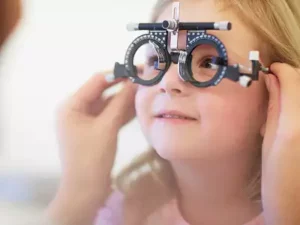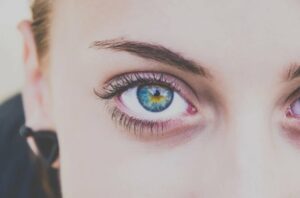Amblyopia, or “lazy eye,” is a condition in which one eye has impaired vision that cannot be improved by using corrective lenses. It’s a fairly common vision issue in kids, brought on by the brain’s failure to develop the visual system of one eye normally.
Amblyopia is typically brought on by strabismus, also known as crossed or turned eye, which occurs when the eyes are not pointing in the same direction. When the eyes aren’t properly aligned, the brain receives two different images, leading to amblyopia in one eye. Amblyopia can also be caused by a lack of eye movement, such as in the case of a drooping eyelid or a cataract, or by an abnormally large amount of farsightedness, nearsightedness, or astigmatism in one eye.
Prevention and Treatment
The condition of amblyopia can be avoided if its onset is caught and treated in time. The best time for an eye exam is between the ages of 6 months and 3 years, when a child is most at risk for developing amblyopia if not treated. Prompt treatment is crucial in preventing the development of amblyopia in cases where an eye turn or a significant difference in the prescription between the two eyes is present.
The “good” eye is used to stimulate the “lazy” eye, which then develops better vision. Several techniques exist for this purpose, including patching, in which the child’s good eye is covered with an adhesive patch for a set period of time every day so that the lazy eye can be trained. As an alternative, atropine drops can be used to blur the good eye’s vision and trick the brain into using the lazy eye. Patching and atropine drops are sometimes used together. Patching or atropine drops can be used in conjunction with vision therapy, which consists of exercises to improve visual skills
Amblyopia is a common visual problem that, if caught and treated early, can be avoided. Amblyopia can be prevented with early detection through routine eye exams, especially for children. Patching, atropine drops, and vision therapy are all viable treatment options, and it is possible that a combination of these methods will yield the best results. Amblyopia is a serious condition that, if left untreated, can cause irreversible vision loss in the affected eye.





